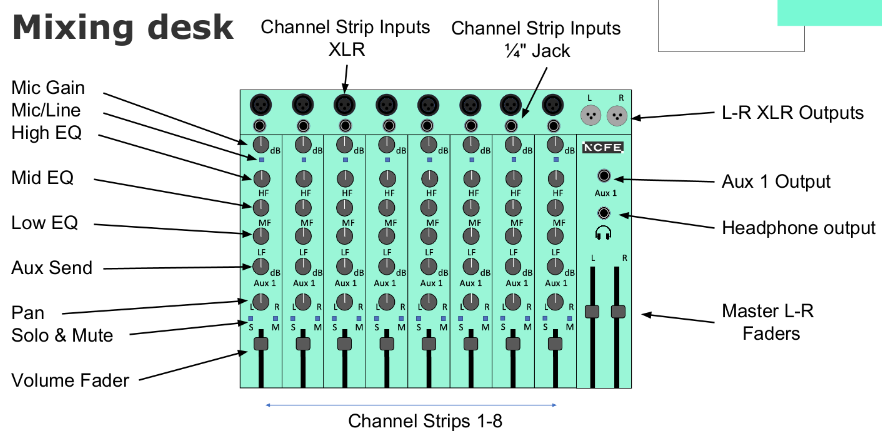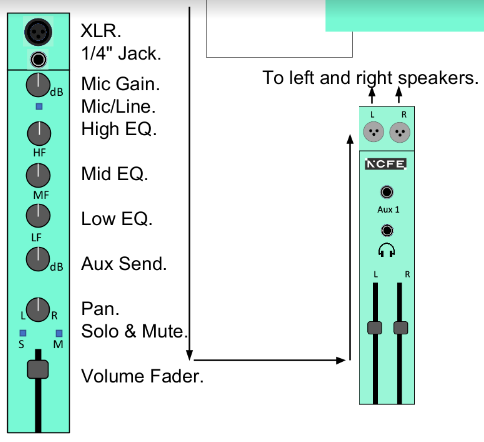Parts of a Mixing Desk
1/3
Earn XP
Description and Tags
Music Tech || MT CA2 - The Digital Audio Workstation
Name | Mastery | Learn | Test | Matching | Spaced |
|---|
No study sessions yet.
4 Terms

Label the mixing desk.
Mic Gain
Mic/Line
High EQ
Mid EQ
Low EQ
Aux Send
Pan
Solo & Mute
Volume Fader
Channel Strip Inputs XLR
Channel Strip Inputs ¼" Jack
L-R XLR Outputs
Aux 1 Output
Headphone output
Master L-R Faders
Channel Strips 1-8


How does one channel strip of a mixing desk work?
An audio signal travels from the top of the strip at the input section.
It then travels down the strip until it reaches the volume fader where it is sent to the master fader.

What does the auxiliary send do?
Creates a copy of the signal before the channel strip fader.
You can control the level (dB) of the signal that is sent to the Aux output.
This can then be sent to a monitor (speaker or headphones) to act as a monitor mix for a performer so they can hear themselves on stage.
What does the EQ and Pan do?
Most mixing desks will include built in EQ and Pan on each channel strip.
This means that you can:
Shape the tone of the incoming signal.
Create separation by using the stereo field.
Some desks will also have compression on each channel.